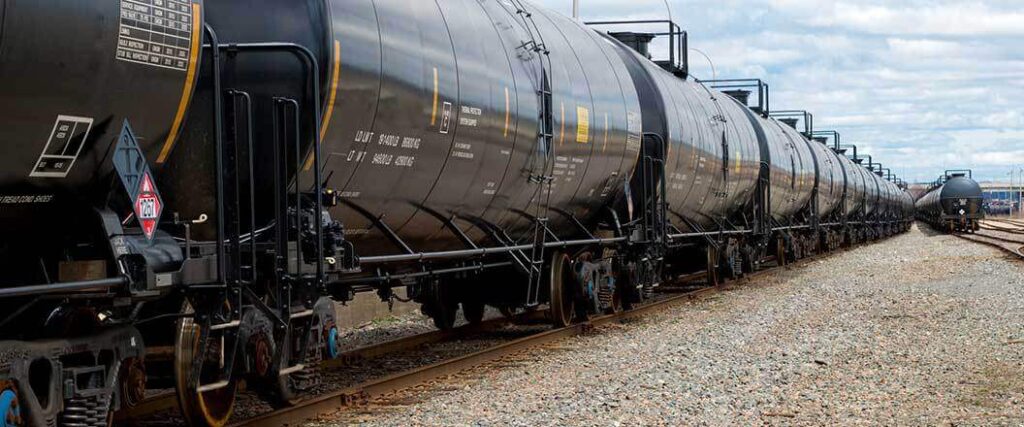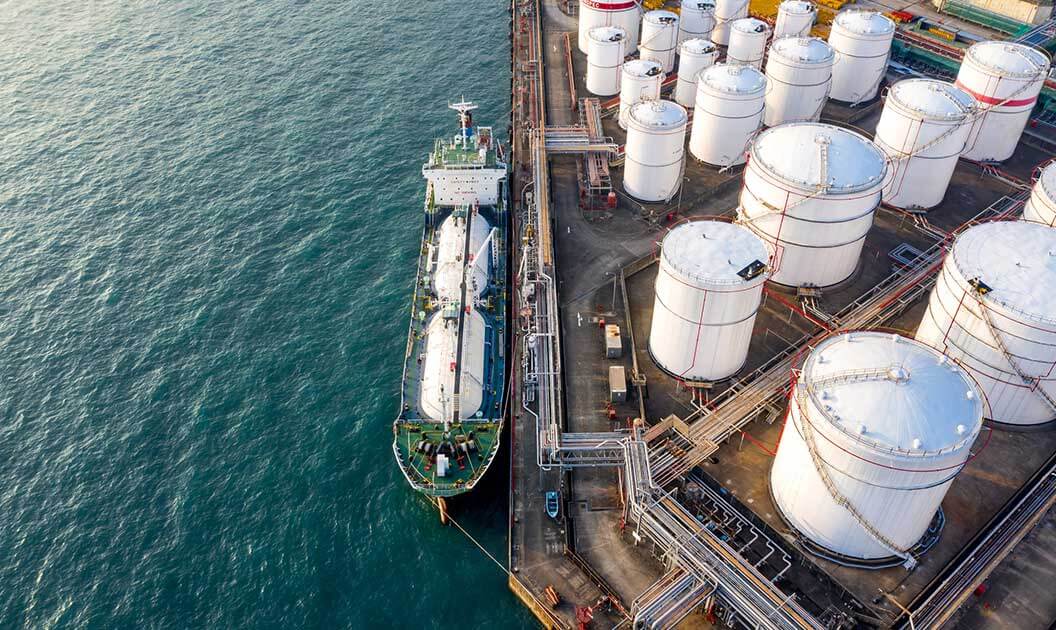Crude oil is used to make many things in our daily lives, from gasoline, to plastics, wax and even pharmaceuticals. However, obtaining the oil and finding a way to transport it to a refinery capable of processing it can pose a challenge. Transloading is a common solution to this challenge.
Transloading oil is necessary to transport petroleum from its point of origin to a facility capable of turning it into usable goods. The process requires specialized equipment including loading racks, metering systems and spill containment to transfer the oil from one mode of transport to another and to its destination.
Read on to learn more about transloading oil and the equipment necessary to complete the process successfully.
What is Transloading?
Transloading is the process of transferring a shipment from one form of transportation to another, typically with some degree of processing involved. Transload services are most commonly used when either one form of transportation won’t be enough to complete the job, or when it’s more efficient or cost-effective to use multiple modes of transportation.

Why Does Oil Need to be Transloaded?
Crude oil, also known as petroleum, is often found deep underground and in places far from any necessary infrastructure. Depending on its location, the nearest oil refinery or pipeline could be hundreds of miles away. Physical barriers like mountains and rivers can also make it difficult to transport the oil to its destination using only one form of transportation.
That’s where transloading comes in. Instead of attempting to transport the oil by tank truck alone, the truck will transport the oil to a railyard equipped with transload capabilities. From there, the truck transfers the oil to a number of rail cars where it will travel the rest of the way. By loading the oil onto a train, transport costs are reduced dramatically, and far more product is able to be moved in a single trip.
What Equipment Do You Need to Transload Oil?
Transloading is a great option to efficiently transport goods from one place to another, but it requires specialized equipment in order to complete the process safely and successfully.
A variety of equipment is used at the transload facility in order to complete the process.
Transloading equipment includes:
- Loading rack
- Loading arms
- Hoses
- Metering systems
- Spill containment pans
Additionally, standard safety equipment (goggles, gloves, protective wear) is worn by workers throughout the process. No matter what equipment you’re using, it’s important to make sure that all of it meets the Occupational Safety and Health Administration’s (OSHA) specifications.
The equipment listed is by no means a comprehensive list of everything you’ll need to transload oil, but it does include some of the most common and important pieces necessary to get started.
If you’re just looking for a provider to help you with transloading oil, you don’t need to be an expert on oil transloading equipment. An experienced and knowledgeable 3PL like R+L Global Logistics will take care of this for you. Our team has access to strategically located transload facilities with all of the required equipment. When you’re ready, request a quote from our team and get your oil moving.
Loading Racks
A loading rack, also known as a transloader, is a piece of equipment necessary to access the hatches on a rail car or tank truck and transfer the oil. They can be outfitted to provide a variety of transload-related tasks. This includes providing mobile capability, the ability to load rail cars from either the top or the bottom, or the ability to process multiple tanks at once.
Many loading racks are simple platforms fitted with loading arms. More complex loading racks can be outfitted with tracking gangways, elevating platforms, safety cages, and double-sided capability. These complex loading racks are often mobile units capable of completing their tasks anywhere at the transload facility.
The most important thing is that the rack should be designed for employee safety and fall protection. The stairs, platforms and gangways should all be non-slip and surrounded by guard rails. There should also be safety cages guarding the operator during the venting and loading process.
Loading Arms
Loading arms, as well as hoses and hose arms, are all tools necessary to transfer the oil from the source to the rail car or tank truck. Loading arms can be either top-loading or bottom-loading, with bottom-loading being the industry-preferred option for a number of reasons:
- Reduced Risk of Falling: Bottom-loading pumps keep employees grounded. Falling is among the top risks involved in transloading oil. Therefore, any opportunity to keep the operator on the ground where they can connect the load arm is preferred.
- Faster Loading Times: Due to the fact that the operator is able to connect the loading arm from the ground, the need to maneuver up platforms and across gangways is eliminated. This generally speeds up the entire loading and unloading process.
- Less Spillage and Vapor Loss: Top-loading tanks create an opening for evaporation and have a higher likelihood of spills. By loading from the bottom, the top remains sealed and access to the air pocket above the oil is eliminated, reducing the risk of separation and spills.
No matter what type of loading arm or hose you’re using, make sure that it’s fitted with the proper valves, pumps and instrumentation required to prevent leaks and ensure a smooth transfer process.
Metering Systems and Skids
Having the ability to control the flow and the amount of oil that gets transferred is crucial to the loading and unloading process and is key to preventing spills.
Metering systems and skids give the operator control over some of the key aspects of the process, including:
- The ability to control how much oil is transferred
- Regulate the flow speed throughout the process
- Blend multiple streams for better handling and storage
In order to maintain an efficient and highly accurate oil transloading process, metering systems and skids are a must.
Spill Containment
Spill containment track pans are necessary to prevent damage to employees and the environment in the case of a spill during the transloading process. Spills can happen when a seal fails while loading or unloading. Track pans are there to hold the drips, leaks or spills when they occur.
Spill pans are typically made of fiberglass, steel, or a combination of the two, and consist of a center pan for spills between the tracks, and two outrigger pans on each side. The pans typically contain drain ports that collect the oil after a spill and connect to drain pipes for removal.

How to Find an Oil Transloading Facility
An oil transloading facility is any installation that oversees the handling, storing, or processing of petroleum. It also has the ability to load it to and from trucks, ships, rail cars and pipelines. Oil transload facilities are outfitted with all of the equipment listed above and are often found at rail yards, ports and other terminals.
There are terminal and transload maps available for every type of bulk transload facility, including oil transloading facilities. Reach out to us and our team of supply chain specialists will find an oil transload facility that meets your needs.
Find Your Oil Transload Solutions with Transload Services USA
Whether you’re transloading oil or any other type of product, R+L Global Logistics can help you get the job done right. We know the challenges involved and can help you with a variety of services. Including:
Our supply chain specialists take the time to listen to your needs. Once we understand your situation, our team crafts a custom plan designed to address your specific objectives. We utilize our strategic resources to their fullest extent in order to help you accomplish your supply chain goals.
Contact us today at (352) 282-4588 and let one of our supply chain experts answer your questions, or fill out a hassle-free quote and find a solution to all of your transloading needs.

